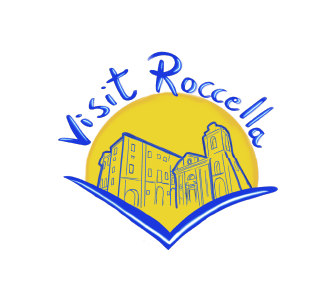translated with AI
It was in 1613 when Prince Fabrizio Carafa manifested, with a notarial act, his intention to build in Roccella and “establish a Bailiwick by assigning so many valuable stable assets worth forty thousand ducats of the said Kingdom of Naples with the condition that it be the Juspatronato of all the descendants of his line…”.
Another document specifies that the Prince founded the Juspatronato, or the Knights of Jerusalem Priory in Roccella, by using two thousand ducats of perpetual income to have his son attain the “dignity of the Grand Cross”.
This concession implied that the Prince was responsible for the construction of the headquarters and the Church dedicated to St. John the Baptist.
This papal authorization is dated October 9, 1614, in which it is specified that Prince Carafa can “establish and erect in the land of Roccella a church under the title of Bailiwick or Priory of the Grand Cross… and that it remains forever by right of the supplicant and his successors”.
The establishment of the Priory is a matter of great importance, both because it comes from the initiative of a family that obtained the right to found it as jus patronage, and also as a prestigious element for the religious institution.
The various Priors were, in order:
- Fra’ D. Francesco Carafa, youngest son of D. Fabrizio and D. Giulia Tagliavia d’Aragona (died in Spain and then buried in the Roccella Priory);
- Fra’ D. Gregorio Carafa, son of D. Gerolamo and D. Diana Vettori Borghese, who from 1680 to 1690 held the prestigious role of Grand Master of the Order of Malta;
- Fra’ D. Francesco Maria Ilario Carafa, son of D. Gerolamo and D. Diana Vettori Borghese (buried in the Roccella Priory);
- Fra’ D. Carlo, son of D. Vincenzo and D. Ippolita Staiti d’Aragona from the branch of Bruzzano;
- Fra’ D. Paolo, son of D. Giuseppe, 2nd Duke of Bruzzano, and D. Antonia di Sangro;
- Fra’ D. Domenico Carafa, son of D. Gennaro Maria Carafa Cantelmo Stuart.
In the mid-1700s income tax declaration, the Priory reports with the title: “Assets of the Illustrious Bailiwick and Priory of the Sacred Religion of Jerusalem in this City of Roccella”. From the palace next to the Church of St. John, composed of several rooms and lower floors, it received a profit of twenty ducats per year. Additionally, it received income from renting houses within the city walls. Furthermore, it owned about twenty-five tomolate of land from various Roccella districts leased out. Altogether, it amounted to an income of about forty ducats. This sum was absorbed by the maintenance and upkeep expenses of the Church, even more so, to compensate the Reverend Clergy on the feast day of St. John the Baptist.
The devastating earthquake of 1783 did not cause serious damage to the Church structure, so Mass continued to be celebrated. Confirmation of this is notified by the Bishop of the time in a letter to Archpriest Caccamo, which ordered that no one abuse the precariousness of the main Churches with personal initiatives of various priests to officiate Masses in other Churches, such as St. Lucia, establishing the exception “… to celebrate Mass only to the chaplain of the Priory, who can celebrate his Mass in said Church of the Priory…”.
The records of the pastoral visits of the various Bishops of the 1800s confirmed the good state of preservation of the Church of St. John.
For several years, this Priory Palace served as municipal offices and classrooms for the primary school. The rental contract was signed, after agreement, between the Mayor and the Treasury of Prince Carafa, and the annual rent was almost always eight ducats.
Gregorio Carafa
Gregorio Carafa was born in Castelvetere on March 17, 1615, and after 12 days Monsignor Carafa requested that his nephew be admitted, albeit with a waiver given his tender age, to wear the mantle of Malta.
He held prestigious military positions with excellent results, so much so that Grand Master Cottoner, shortly before his death, indicated to the trusted Knights the name of Gregorio as his successor: on May 2, 1680, he was elevated to the throne of the Order of Malta, as the sixty-first Grand Master Fra’ Gregorio Carafa, the first of the Calabrians and the third of the Neapolitans.
His Grand Mastership lasted for 10 years and marked, among many things, also a decisive period for the development of art and architecture on the island with important commissions that, thanks to the Calabrian knight Mattia Preti, of whom Carafa was a great patron, transformed the appearance of many significant public buildings.
The Grand Master was buried in the conventual Church of the Order, now called the Co-Cathedral of St. John, where, on his sumptuous mausoleum in polychrome marbles surmounted by his bronze bust erected in life, the following epitaph is read:
FRATER DOMINVS GREGORIVS CARAFA / E PRINCIPIBVS ROCCELLAE MAGNVS HIEROSOLYMITANI ORDINIS MAGISTER,
CVI VIVERE VITA PERACTA IN VOTIS ERAT
QVIA MORTEM PRIMAM, QVI PRAEVENIT, SECVNDAM EVITAT,
HOC SIBI ADHVC VIVENS
NON MAVSOLAEVM, SED TVMVLVM POSVIT RESVRRECTVRO SATIS,
ANNO DOMINI MDCLXXXVIII
